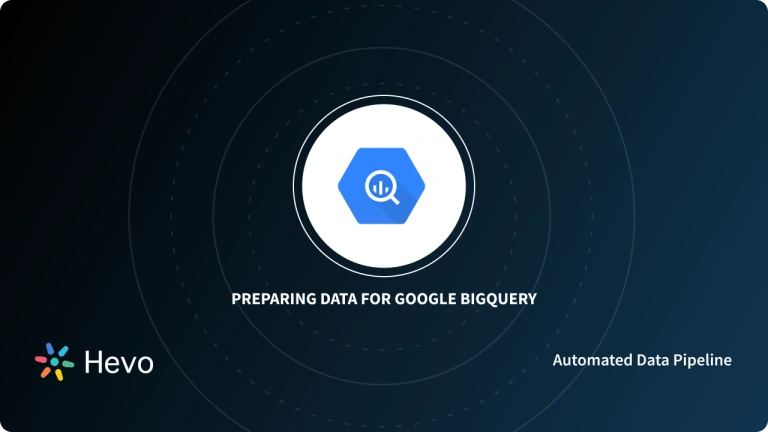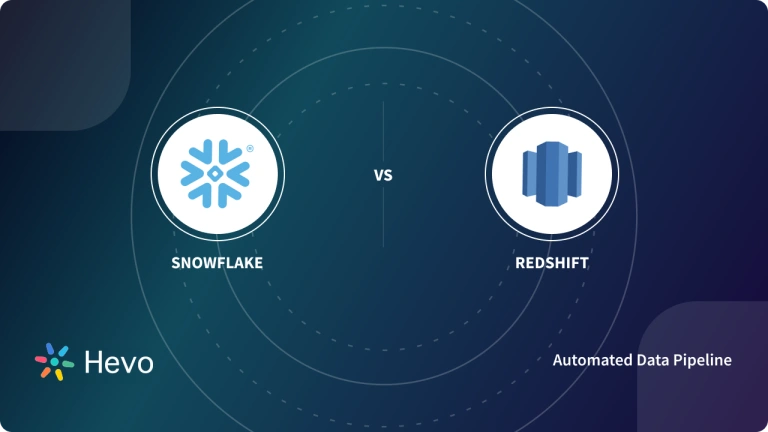Database and data warehousing technologies are rapidly evolving, with new tools emerging to integrate data warehouses like Snowflake and BigQuery.
Snowflake offers a flexible cloud-based solution for easy data storage and analytics, while Google BigQuery provides a serverless, cost-effective platform with built-in machine learning.
Integrating Snowflake with BigQuery allows you to harness the strengths of both, creating powerful and scalable cloud-based management and analytics without relying on traditional hardware.
This article guides you through connecting Snowflake to BigQuery and provides an overview of both technologies.
Table of Contents
Prerequisites
- A Snowflake Account.
- A Google Account.
- Basic working knowledge of Data Warehouses
Introduction to Snowflake
Snowflake is an ANSI-SQL-based cloud data warehouse that uses leading cloud services like AWS, GCP, and Azure. Snowflake is entirely a Software-as-a-Service that means it handles all the hardware maintenance and performance tuning activities, thereby making the user a hassle-free experience.
Estimate Snowflake costs effortlessly—check out our Pricing Calculator now!
Introduction to Google BigQuery
Google BigQuery is a Data Warehousing platform that is serverless, cost-effective, highly scalable, and has Machine Learning built into it. It uses the Business Intelligence Engine for its operations. It enables quick SQL queries to be combined with the processing power of Google’s infrastructure to manage business transactions, manage the data across different databases, and also allow access control policies for users to view and query data.
BigQuery has a BI engine which is a fast memory analysis service that enables users to analyze large and complex datasets with high concurrency. It works very well with tools such as Google Data Studio and Looker for analysis.
Importance of Migrating from Snowflake to BigQuery
Most organizations have mastered the science and technique of data warehousing. These organizations have applied prescriptive analytics to their huge volumes of data, gaining insights into their business operations. Conventional Business Intelligence (BI) tools are good for querying, reporting, and Online Analytical Processing but that’s not enough.
Today, the goal of businesses is to use descriptive analytics to understand past events as well as predictive analytics to predict the occurrence of future events. A combination of descriptive analytics and predictive analytics can help businesses to take real-time actions. That is why Google developed BigQuery. BigQuery provides its users with access to structured data storage and analytics that are flexible, scalable, and cost-effective.
Enjoy automated data integration from 150+ sources to any destination warehouses like Snowflake, BigQuery, real-time updates, and fault-tolerant architecture provided by Hevo to make data movement smooth and efficient. With its industry-leading features:
- User-friendly interface makes it easy to use, even for professionals with no coding experience.
- Automatic schema mapping enables you to focus on the analysis instead of focusing on manually handling data.
- 24/7 support ensures that you get help whenever you are stuck.
- End-to-end encryption ensures there is no data loss.
Transform and sync your data effortlessly with Hevo’s robust solutions! Sit back while Hevo takes care of your data.
Get Started with Hevo to integrate your dataETL cost visibility without leaving Snowflake.
Steps to Connect Snowflake to BigQuery
You can connect Snowflake to BigQuery by following these 2 steps:
Before connecting Snowflake to BigQuery, it is important to understand a few parameters that make up this connection. Some of those parameters are:
- Cloud Storage Environment
Before connecting Snowflake to BigQuery, it is important to set up the Cloud storage environment. You can rely on a cloud storage bucket to stage your data for initial loading and querying as an external source of data. If the location of the BigQuery dataset has been set to another value other than the United States, you should provide a regional or multi-regional cloud storage bucket in a similar region as the BigQuery instance. The architecture of Snowflake’s Cloud storage environment is given below.
- Schema
Database schema plays an important role when you are connecting Snowflake to BigQuery.
When data is imported in bulk from a file such as CSV, JSON, or an Avro, BigQuery automatically detects the schema, hence, there is no need to predefine it. If you want to change the schema during migration, first migrate the schema as-is. BigQuery supports different data model design patterns like the Snowflake schema and the Star schema.
Note that BigQuery uses a case-sensitive naming convention while Snowflake supports a case-insensitive naming convention. This means that you must rectify any table-naming inconsistencies in Snowflake as well as those that arise during migration to Bigquery.
BigQuery does not support some schema modifications, hence, they will require some manual workarounds. Examples include changing a column name, changing column data type, deleting a column, and changing the column mode.
- Supported Data Types, File Formats and Properties
Snowflake and BigQuery support almost similar data types, but they sometimes use different names. Snowflake can export data to BigQuery in three file formats namely CSV, JSON (newline-delimited), and Parquet. If you need a quick load time, choose parquet.
- Migrating Tools
When you connect Snowflake to BigQuery some tools are needed. There are different tools that you can use to migrate data from Snowflake to BigQuery. Examples include the COPY INTO command, BigQuery Data Transfer Service, gsutil, bq, cloud storage client libraries, BigQuery client libraries, BigQuery query scheduler, etc.
- Migrating the Data
You can export your Snowflake data into a CSV, Parquet, or JSON file and load it into the cloud storage. You can then use the BigQuery Data Transfer Service to load the data from cloud storage into BigQuery.
You can build a pipeline that unloads data from Snowflake. The following steps can help you connect Snowflake to BigQuery:
Step 1: Unloading the Data from Snowflake
Unload the data from Snowflake into Cloud Storage. You can also use tools such as gsutil or the Cloud Storage client libraries to copy the data into Cloud Storage.
Step 2: Copy the Data onto BigQuery
Use one of the following ways to copy the data from the Cloud Storage into BigQuery:
- bq command-line tool.
- BigQuery Data Transfer Service.
- BigQuery client libraries.
That’s it! You have successfully connected Snowflake to BigQuery!
This process does have a few limitations. Some of those limitations are:
- The process is lengthy and complex. The user has to go through many steps to do configurations.
- The process of setting up Snowflake to BigQuery migration is too technical. This means that technical expertise may be needed. Companies without technical know-how may be forced to hire the services of a technical team.
- It is impossible to transfer data from Snowflake to BigQuery in real-time.
Learn More About:
Replicate Data from BigQuery to Snowflake
Conclusion
This article gave you a step-by-step guide on connecting Snowflake to BigQuery. It also gave you an overview of both Snowflake and BigQuery. Overall, connecting Snowflake to BigQuery is an important process for many businesses and you can follow the simple steps above to achieve this.
In case you want to integrate data from data sources into your desired Database/destination like BigQuery and seamlessly visualize it in a BI tool of your choice, then Hevo Data is the right choice for you! It will help simplify the ETL and management process of both the data sources and destinations. Sign up for Hevo’s 14-day free trial and experience seamless data migration.
FAQ on Snowflake to BigQuery
1. How do we migrate Snowflake to BigQuery?
To migrate from Snowflake to BigQuery, use BigQuery Data Transfer Service for automated data transfers or third-party ETL tools for custom extraction, transformation, and loading. Ensure data schemas and formats are compatible between the two platforms to facilitate a smooth migration.
2. How to pull data from Snowflake to Oracle?
To pull data from Snowflake to Oracle, use ETL tools like Informatica or Talend to extract data from Snowflake, transform it as needed, and load it into Oracle. Alternatively, you can use Snowflake’s data export features and Oracle’s data import utilities to manually transfer data.
3. How much does Snowflake BigQuery cost?
Snowflake and BigQuery have different pricing models:
1. Snowflake charges based on storage and compute usage. Costs include data storage fees and charges for virtual warehouses.
2. BigQuery uses a pay-as-you-go model with costs for storage and query processing. Storage costs are based on the amount of data stored.









